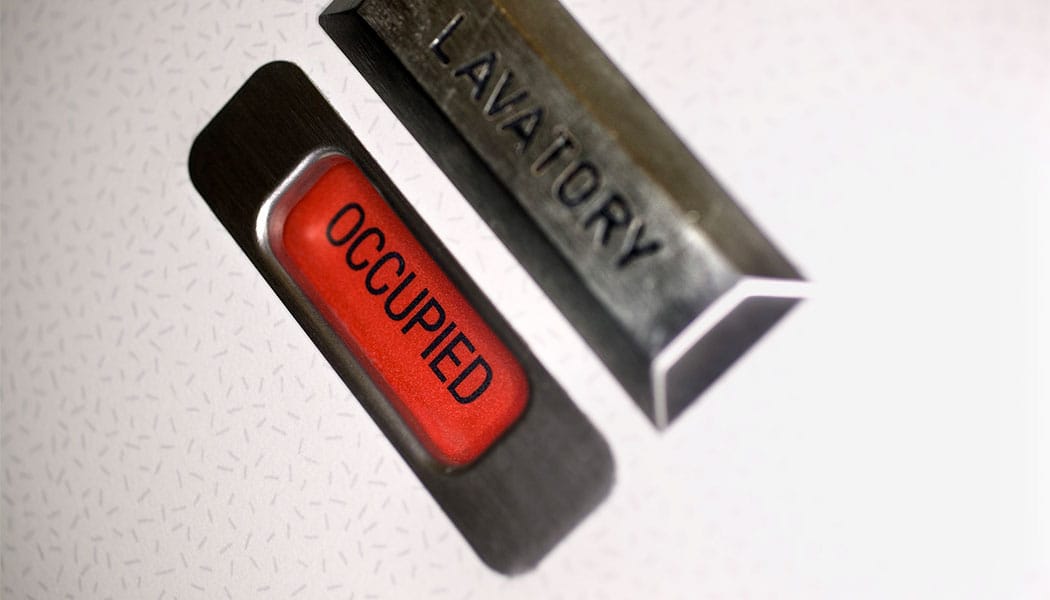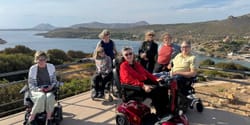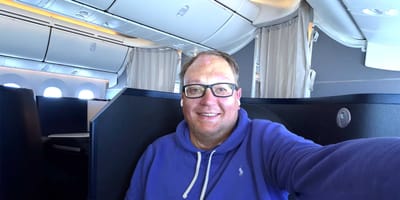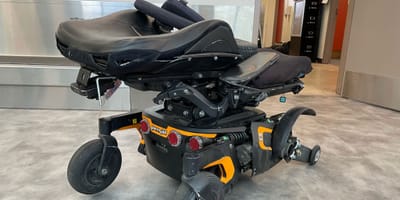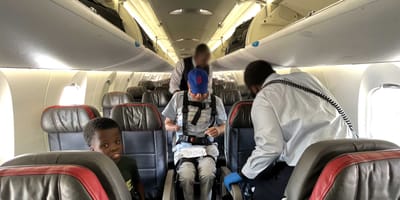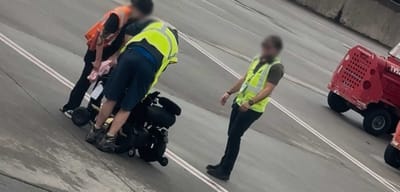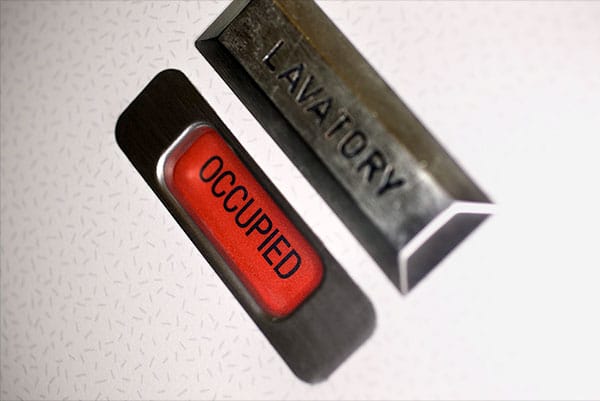
I’m not new to flying with a disability. Just last month, I logged my 400th flight traveling with a wheelchair. One of the major concerns my readers have with air travel is access to the bathroom. I have long defended airplane lavatories as functional, despite their cramped conditions. But on two of my recent flights, I came face-to-face with issues that made me realize it’s not so peachy for everyone – even me.
In this post, I want to offer some constructive criticism to airlines as well as some recommendations for future improvements to wheelchair accessibility on airplanes. We don’t have to accept the status quo which, for many, is an accessibility nightmare.
Inaccessibility is “grandfathered in”
Back in May, I flew on a Boeing 747 from Seattle to Tokyo – a flight of about 9 hours in the air, plus the 90 minutes of added time for boarding/deplaning that wheelchair users are accustomed to. Since the Boeing 747 is a wide body aircraft with dual aisles, it’s required to have an accessible lavatory, as per the Air Carrier Access Act § 382.21:
Aircraft with more than one aisle in which lavatories are provided shall include at least one accessible lavatory. This lavatory shall permit a qualified individual with a disability to enter, maneuver within as necessary to use all lavatory facilities, and leave, by means of the aircraft’s on-board wheelchair.
But my Delta Air Lines aircraft didn’t have one. The crew looked for the accessible lavatory, consulted the aircraft manual and even radioed for information. The flight crew were extremely friendly and very apologetic. I actually sympathized with them! This was the first time I’ve encountered an airplane without an accessible lavatory on an intercontinental flight. They were embarrassed.
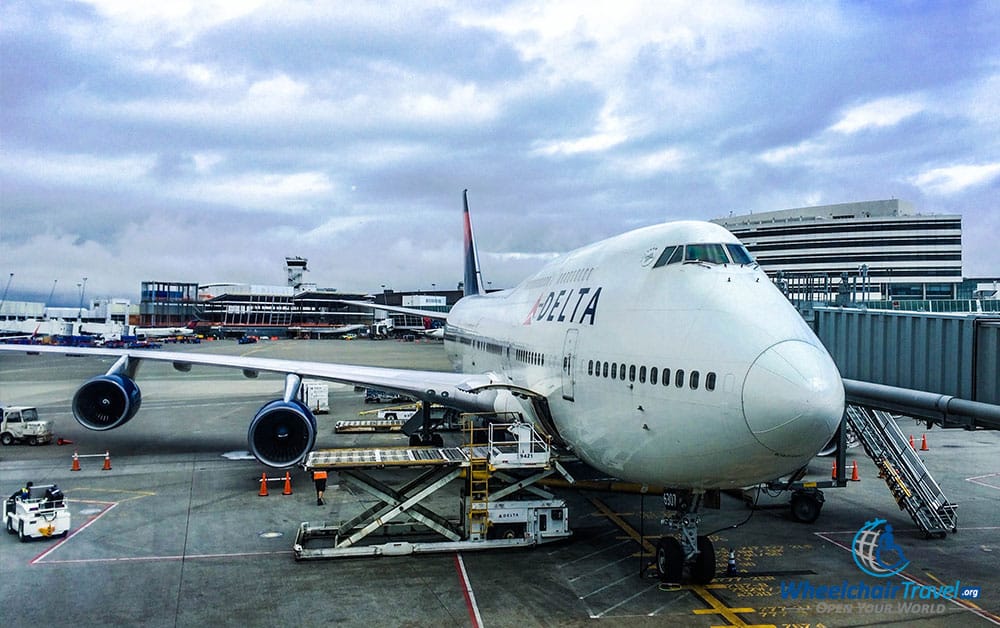
So, what gives? After I submitted a complaint, the airline informed me that the aircraft, N667US, was exempt from the ACAA requirement due to its age. The Boeing 747 was delivered to its original owner, Northwest Airlines, on July 20, 1990. Delta was right – aircraft delivered prior to April 1992 are exempt from the rule, but only until the lavatory is replaced. The last interior mod of this particular aircraft, completed on August 1, 2012, specifically excluded new lavatories.
My message to Delta and other airlines with old wide body planes: update them! If businesses would do the right thing and create access on their own, we wouldn’t need the government to regulate.
Accessible lavatories are useless without crew training
Last month, I took my first flight on an Airbus A350. The Vietnam Airlines flight from Hanoi to Paris clocked in at 12 hours from take-off to touchdown. While I’ve “held it” on flights of this length before, I wanted to celebrate the A350 with champagne. I didn’t hold back, and asked to use the bathroom about 6 hours into the flight.
The crew was very helpful in getting me to the lavatory with the onboard aisle chair. Unfortunately, they weren’t trained in operating the lavatory partition – wall that opens between two standard lavatories to create a larger space. They fiddled with the partition for about 10 minutes, but couldn’t release it.
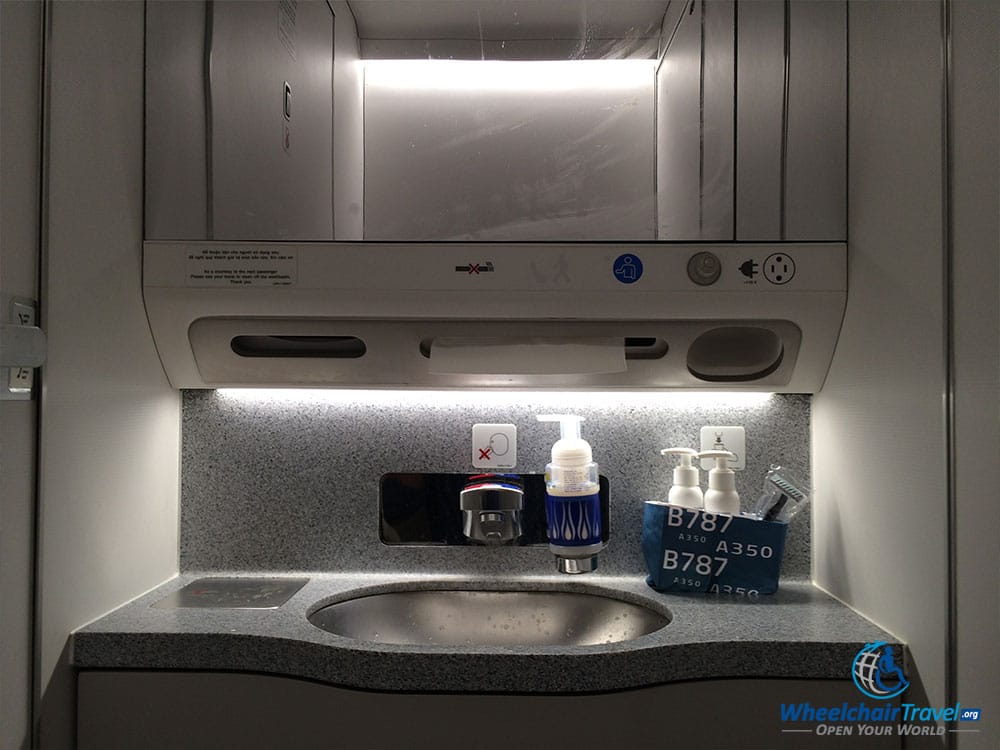
The crew’s inability to provide access to the lavatory distressed me, because I really had to go. After an entire bottle of champagne, your bladder status gets elevated to urgent. I had to make the situation work, uncomfortable as it was. I thus had the flight attendant push me into the standard lavatory sideways, then transferred onto the toilet. Were I not a triple amputee with shortened legs, this would not have been possible.
I’m not a very mobile person, and it was an absolute struggle to get my pants off. I only have one hand, after all. That said, I made it work, though the process took half an hour. By the time I got back to my seat, I was exhausted and my bum was hurting from the pressure of the aisle chair and hard toilet. I was thankful I had a lie-flat business class seat to fall asleep in for the rest of the journey. But not every passenger is so fortunate, and I don’t get to fly in the forward cabin all of the time either.
How do we fix it?
Allow me to dispel with the pleasantries and provide my succinct recommendations for solutions that will increase the accessibility of airplane lavatories for wheelchair users. Here are some policies that should be enacted through legislation, or by the airlines directly.
- All wide body aircraft currently in operation should have at least one wheelchair accessible lavatory installed. 25 years after the ACAA, it is time to end the grandfather clause.
- Accessible lavatories should be made available on single aisle aircraft operating flights of more than 1,000 miles.
- On wide body aircraft, accessible lavatories should grow in size to better accommodate wheelchair users.
- Where possible, accessible lavatories should be placed at the front of the economy class cabin – providing easier access to disabled passengers in both economy and premium cabins.
- Every pre-flight check should include a test of any partitions which could block an accessible lavatory from use. If a passenger with a qualifying disability is aboard, an aircraft without a functioning accessible lavatory cannot be declared airworthy.
- Cabin crew should receive yearly training in the operation of the onboard aisle chair and accessible lavatory features.
You can help to bring these amendments to the Air Carrier Access Act by contacting your elected representatives. Complain to your airlines about limited access, and be sure to file a complaint with the Department of Transportation when your existing rights have been violated.
It’s time the Air Carrier Access Act do what it was intended to do – provide equal access to air travel for everyone. “Equal access” should not allow an airline to deny me access to the bathroom on 9 hour flights. Don’t you agree?

